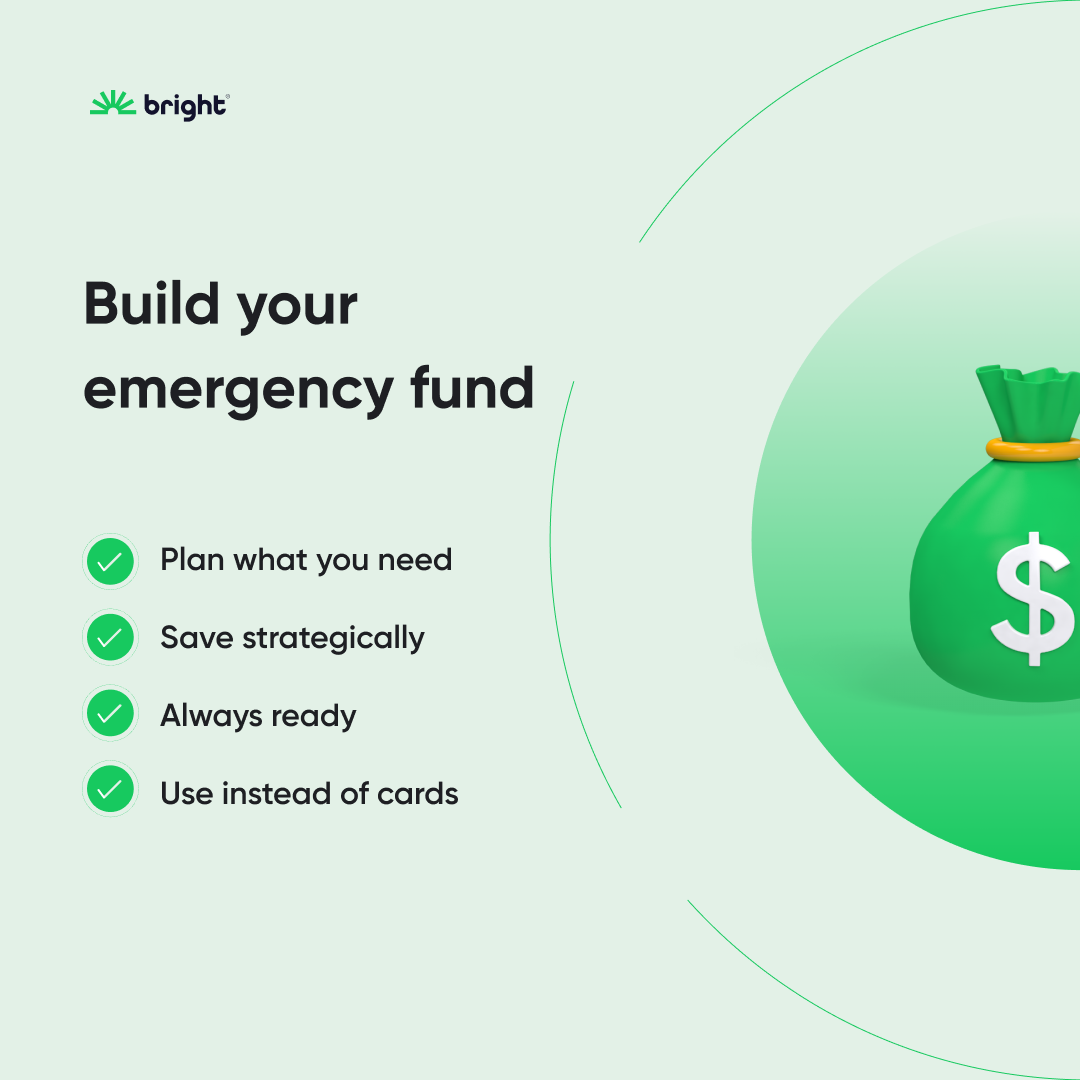.png)
Wohoo!
You are subscribed to our blog newsletter
Awesome!5 ways to maintain a debt-free life
Looking to stay debt-free? Here's how to do it.
No one really wants to be in debt. It's stressful, and it costs money you could be spending in more meaningful ways. But some days, living debt-free can seem like a pipe dream, far from realistic.
So here are 5 practical steps to get started and stay on track for a debt-free life.
1. Control your regular expenses
Every household has regular expenses, the bills you know you have to pay every month. Keeping your regular expenses as low as possible is a great way to control your spending - and avoid taking on debt.
Start by tracking your regular expenses - what you know you need to spend every month. Rent, utilities, health care, car payments - make a list and look for things to cut.
Cutting regular essentials is never easy. But if you're paying for it every month, and you can do with it, you're on way to extra money - cash you can use instead of taking on new debt.
A common-sense rule for monthly budgeting is simple: 50/30/20. Use 50% of your monthly income for regular expenses, 30% for nonessentials and 20% for savings. You can tweak the numbers if you need to, but it’s a smart way to keep spending and saving in balance - and keep you from relying on credit cards.
2. Control non-essential expenses
Non-essential expenses can be just as hard to cut, especially when we rely on them as rewards or indulgences, the little extras that keep us motivated.
So what is non-essential? Ask yourself these questions:
- Do I need this right now?
- Will I be okay if I don't buy this?
- Will I have enough money after I buy this?
Weigh the importance of regular minor purchases. Do they have to be part of your monthly budgeting? And how much of your credit card bills are filled with them? Are they a big part of each month's credit card balance?
3. Keep an emergency fund
An emergency fund is like a personal safety net, money to dip into when your monthly budget falls short. It's emergency savings reserved for unexpected expenses, like medical bills or missed paychecks from a job loss.
It’s better than using credit cards, because you won’t pay interest, and as a specifically designated fund, you can avoid tapping into the rest of your savings.
A common rule of thumb is to keep three months worth of regular expenses in your emergency fund. You don’t have to fund it all at once. You can build it in small steps.
Make saving a regular habit, even in small amounts, and try using an autosave service. You’ll start earning interest right away too.
A financial budget and plan that includes regular saving, alongside other monthly spending, can go a long way to help you become debt free.
Importance of an emergency fund.
4. Think before raising your budget
If you get a raise or a sudden cash windfall, consider adding it to your savings, instead of raising your monthly budget.
In a savings account, the extra cash will grow and earn interest, helping you get closer to your next milestone. Through the magic of compounding, you’ll earn more month after month and feel more in control.
5. Focus on your credit card debt
Make a plan. Choose a method. Focus and stick to it. The sooner you tackle your cards' high interest rates, the sooner you can find more stability in debt-free living.
The two most popular strategies for killing debt payments are "snowball" and "avalanche." For both, you'll make minimum payments across the board, but focus every month on a specific target card.
With the debt snowball method, you'll target the card with the lowest balance, one after another. You'll pay off cards fast, and use the minimum payments from cleared cards to increase the payment on the target cards that follow.
With the debt avalanche method, you target the card with the highest interest charges. That's not necessarily the card with the highest interest rate. It could be a card with low rate but a high balance - whichever card is charging you the most interest every month. You might not pay off your first so quickly, but you'll pay less in interest in the long run.
Another alternative: debt consolidation with a personal loan. Use the loan's lump sum to pay off your cards and manage the debt repayment with a loan's single predictable payment each month.
Or look for a balance transfer credit card. They typically offer low or 0% APR for the first several months, to encourage your transfer debts from cards with higher interest rates. During the low-interest introductory period, you can pay off the amount of money you've transferred.
These debt management plans can help you get out debt faster, boost your credit score, and move you toward your financial goals.
Use Bright to stay debt-free
Bright is a faster, smarter way to pay off your debt - and build your savings, so you always stay debt-free.
Your Bright Plan studies your finances, analyzes your spending habits and makes payments for you, based on your goals and what you can afford. .
When your finances shift, your Bright Plan adapts - automatically.
If you don't have it yet, download the Bright app from the App Store or Google Play and connect your bank accounts. Set a few goals and let your Bright Plan get to work - automatically.
Recommended Readings:
Bright is focused on the human touch to support customers of its A.I. products. Jayashree leads Services and Support at Bright









